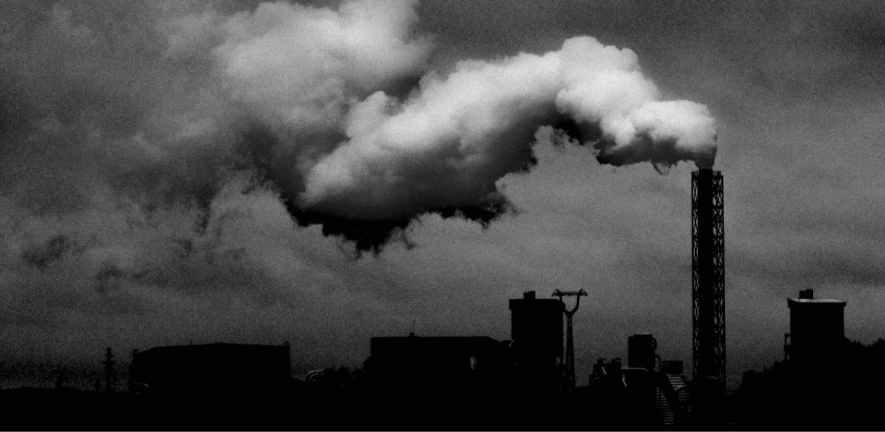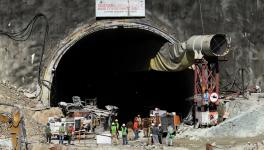The Many Bhopal Gas Tragedies Behind India’s Environmental Law Framework

Representational Image.
The proposed amendments to the Environment (Protection) Act, 1986 seem to forget that compensation is rarely the solution when it comes to tragedies of the nature we saw in Bhopal.
——–
The days leading up to Republic Day in 1985 were tense in the Lok Sabha. The events in Bhopal a few weeks ago had sent shockwaves throughout the world. When the 8th Lok Sabha convened on January 21, 1985, Janata Dal Member of Parliament (‘MP’) Madhu Dandavate compared the Bhopal Gas Tragedy with the bombings of Hiroshima and Nagasaki in Japan. Even back in 1985, our representatives noted the obvious: the lack of provisions for punishments in Indian environmental law (see, for instance, Indian National Congress MP Arvind Netam’s statement in the Lok Sabha on January 21, 1985).
When the Bhopal Gas Leak Disaster (Processing of Claims) Bill, 1985 came to be discussed in the Lower House, it was the Bharatiya Janta Party (‘BJP’) that vehemently opposed it, through its MP C. Janga Reddy. Reddy had then raised the question of why provisions in the nature of criminal prosecution had not been included in the Bill. It was during those times that we also heard calls for a permanent legislation to deal with future such occurrences which posed a threat to life and property (see, for instance, Telugu Desam Party MP S.M. Bhattam’s statement in the Lok Sabha on March 27th, 1985).
Also read: Why the survivors of Bhopal gas disaster continue to agitate for justice even after 37 years
The sense of urgency
The events of Bhopal triggered the passage of this ‘permanent’ Environment (Protection) Act (‘EPA’) a year later, in 1986. Indeed, when the Environment (Protection) Bill was placed for discussion before the 8th Lok Sabha on May 8, 1986, Z.N. Ansari, the then Minister of State in the Union Ministry of Environment and Forests, reminded the house that “the Bhopal gas tragedy has poignantly brought home the dangers to human society, health and environment, which can arise from industrial accidents”.
The notice does not provide any explanation for the proposed changes other than the fact that “inputs” received from stakeholders, and the “concerns” in connection to the “fear” of imprisonment in the EPA.
There was a palpable sense of urgency in those times within the House and beyond that brought about the EPA. We must remember that on the other side of this law lies what is irreversible – the death of thousands, and the ruin of generations. This much must be emphasized, since Bhopal finds no reference in the text of the EPA – one must go through the parliamentary debates of those times to glean the legislative intent behind it.
In fact, each argument that we are reading today, for or against the proposed amendments to the EPA had been discussed in detail more than 35 years ago itself by our representatives. For instance, Congress MP Shantaram Naik pointed at the lack of penalties in the EPA which could lead to situations where “all industrialists who are violating … will go scot free with fine. Unless you make it compulsory imprisonment for violation of environmental law, nothing will be done”. Another Member, Communist Party of India (Marxist) MP R.P. Das, pointed at the need for a funding mechanism to ensure implementation of schemes under the EPA. The entire discussion reflected concerns from the House regarding providing enough deterrence to ensure that those that pollute, particularly industrialists, be punished.
Crucially, on the issue of whether the punishment provided for was adequate or not, Ansari clarified that the proposed imprisonment of five years may in fact be amended, stating that there was no need to “start with a cannon when we can kill mice by a sword”. He went on – “The cannon should be kept for a future date to be used when we are not able to kill the mice by our danda”.
Change of priorities
Fast forward to April 2 this year – we have a completely different Lok Sabha, this time with the BJP in an overwhelming majority, impatient to make it easier for industries to do business in India. Prime Minister Narendra Modi had an interaction with Secretaries to the Union Government in which he specifically flagged the issue of decriminalization of minor offenses and violations. On April 4, Cabinet Secretary Rajiv Gauba (who incidentally had also previously served in the Union Ministry of Environment, Forest and Climate Change (‘MoEFCC’) as a Joint Secretary) sent a letter to all Secretaries to the Union Government requiring immediate action on the “directions” of the Prime Minister, including on the issue of decriminalization.
Also read: Survivors, activists claim BJP rule is the worst period for Bhopal gas tragedy victims
Proposed amendments to EPA
It is in this backdrop that we now approach the Notice for Public Consultation containing a “Note for consultation on proposal to make amendment in the Environment (Protection) Act, 1986”, put out in the public domain on July 1 by the MoEFCC. Briefly, this note proposes the following amendments to the EPA:
- Removal of the penalty of imprisonment as a first option to enforce the EPA, and replacing it with monetary penalties (with the exception of certain serious violations to be addressed under Section 24 of the EPA),
- Providing for an “Adjudicating Officer” to be appointed by the Union Government for adjudicating the quantum of such penalties, and resort to appeal against this officer’s orders before the National Green Tribunal (‘NGT’),
- Imprisonment and enhanced monetary penalties for any person who does not pay up in the first instance,
- An “Environment Protection Fund”, where all these penalties are to be credited.
On the form of the notice
It must be clarified that this notice is not an amendment to the EPA.
It is a notice to the public at large, written by the Additional Director of the MoEFCC. The notice gives the public until July 21 to read, understand and respond to a note where certain amendments to the EPA have been laid out. The notice does not provide any explanation for the proposed changes other than the fact that “inputs” received from stakeholders, and the “concerns” in connection to the “fear” of imprisonment in the EPA.
The legislative intent behind the EPA leaned towards imprisonment as a penalty of first instance. What this notice proposes to do away with is not imprisonment – the proposed Section 15F provides for it – but the existing approach to imprisonment in the EPA.
Crucially, this note has been made available exclusively in the English language on the website of the MoEFCC. These two factors (time and language barriers) alone drastically reduce the efficacy of the consultation that lies at the heart of this process.
On the penalty of imprisonment
The issue of imprisonment in the notice has been central to recent reportage. Many have cited the necessity of the “fear” of imprisonment in environmental laws, and the “deterrence” which comes along with it. Note that the 8th Lok Sabha was also of a similar view at the time when the Environment (Protection) Bill was being discussed in 1986. The in-principle and practical compatibility of stances espousing protection of the environment on one hand and imprisonment on the other is of course a debate larger than the scope of this article. Suffice to say that the legislative intent behind the EPA leaned towards imprisonment as a penalty of first instance, as we see above.
What this notice proposes to do away with is not imprisonment – the proposed Section 15F provides for it – but the existing approach to imprisonment in the EPA. The Act provides for imprisonment as an option at the first instance of contravention of any of its provisions/executive instruments issued as a consequence of these provisions (such as the Environment Impact Notification, 2006).
The notice proposes to remove imprisonment as an option of first instance in response to violation of the EPA. Instead, exemplary monetary penalties are proposed, which extend to any amount equivalent to the damage caused to the environment (refer to the proviso to the proposed Sections 14A(1), 15 and 15A in the notice). It is when a person fails to pay these penalties that imprisonment of up to three years and/or a monetary penalty extending to ten crore rupees has been provided for, under the proposed section 15F.
This is a fundamental shift. The proposed changes would bring monetary penalties at the centre stage, and use imprisonment to ensure that those who violate the EPA pay up. What is perhaps most interesting about this shift is who gets to decide the quantum of penalty, and how.
Also read: Proposed amendments to the CRZ Notification, 2019 and its implications
On the adjudicating officer
The notice proposes to add to the EPA Section 15C, which gives the Union Government the power to appoint an “Adjudicating Officer” (not below the rank of Joint Secretary to the Union Government or a Secretary to a state government). This officer is to determine penalties (and their extent) under the Act. Under the proposed Section 15C(4), these officers have been prescribed certain guidelines which they must keep in mind while arriving at a determination including “(a) population and area impacted or affected, (b) frequency and duration of contravention, (c) vulnerability of class of persons likely to be adversely affected and (d) amount of loss caused or likely to be caused to the person concerned”.
The proposed Section 15C reflects the government’s centralizing push, when it comes to environmental regulation. It is an attempt to ensure that officers of the Union Government are the first to assess any violation of the EPA.
The fifth consideration, worded as “any other relevant factor”, strikes at any attempt to make these guidelines specific (indicated by the use of the term ‘namely’ in Section 15C(4); see also the Supreme Court’s judgment in M/s Sree Durga Distributors versus State of Karnataka (2007)). Officers appointed by, and therefore loyal to, the Union Government may use vague but “relevant” factors to undo the specific environmental justice mandate of section 15C (see, for instance, the use of the word “vulnerability”; see also the Supreme Court’s judgment in Municipal Corporation of Greater Mumbai versus Ankita Sinha & Ors. (2021)). Even otherwise, it may be challenging for a career bureaucrat to measure “vulnerability” with a sense of justice and objectivity.
Fundamentally, the proposed section 15C reflects the government’s centralizing push, when it comes to environmental regulation. It is an attempt to ensure that officers of the Union Government are the first to assess any violation of the EPA. Granted, no law can preclude the jurisdiction that the Supreme Court, high courts and even in this case, the NGT, have over such violations but the fact remains that each of these institutions have remained increasingly deferential to the opinion of executive authorities, and interpreted environmental laws in such a way so as to favour industrial activity in this country (see, for instance, the Supreme Court’s judgment in M/s Pahwa Plastics Pvt. Ltd. & Anr. versus Dastak NGO & Ors. (2022)).
On the funding mechanism
The notice proposes to direct all monetary penalties to an “Environment Protection Fund”, which is to be notified by the Union Government (see the proposed Section 17A in the notice).
The judiciary has, over the years, emphasized more and more on environmental protection through “funds”. In the much spoken about judgment in Vellore Citizens Welfare Forum versus Union of India & Ors. (1996), the Supreme Court specifically directed that fines imposed on polluting tanneries be deposited into a separate “Environment Protection Fund” by the concerned District Magistrates/Collectors, for the purpose of compensating affected persons. This was followed by various high courts directing “Environment Funds” to be created (see the Karnataka High Court’s judgment in B. Krishna Bhat versus State of Karnataka & Ors. (2008) and the Gujarat High Court’s judgment in Solanki Jaswantsinh Kalusinh versus District Collector (2009)).
Recent studies show that similar funds suffer from serious shortcomings, ranging from misutilization to inaccurate calculation of the amount of damage caused to the environment.
In fact, the Supreme Court had a major role in the creation of India’s Compensatory Afforestation Fund as well (see the Supreme Court’s judgment in T.N. Godavarman Thirumulpad versus Union of India & Ors. (2008)), and has been monitoring the administration of the fund (see the Supreme Court’s order in M.C Mehta versus Union of India & Ors. In Re: Status of Funds dated April 10, 2018).
Post 2010, it was the NGT that increasingly began using compensation as a means of restoring the environment. Today, the comprehensive environmental compensation policy that the Central Pollution Control Board has developed exists due to directions of the NGT (see Paryavaran Suraksha Samiti & Anr. versus Union of India & Ors. (2018)).
Also read: NGT orders closure of 69 polluted industrial areas
In the face of such a comprehensive judicial push, a legislative response institutionalizing an “Environment Protection Fund” was not unexpected. However, recent studies show that similar funds suffer from serious shortcomings, ranging from misutilization to inaccurate calculation of the amount of damage caused to the environment.
The present day is far removed from the winter of 1984. Today, we have exponentially more Bhopal Gas Tragedies occurring across India, albeit at a scale that does not shock our conscience in quite the similar way.
The proposed amendments to the EPA are reflective of a new vision of environmental regulation, which falls in line with an idea of a civilizational power that is India. The government must, however, not forget that compensation is rarely the solution when it comes to tragedies of the nature we saw in Bhopal.
Utkarsh Jain is a Dharamshala-based advocate.
Get the latest reports & analysis with people's perspective on Protests, movements & deep analytical videos, discussions of the current affairs in your Telegram app. Subscribe to NewsClick's Telegram channel & get Real-Time updates on stories, as they get published on our website.
























